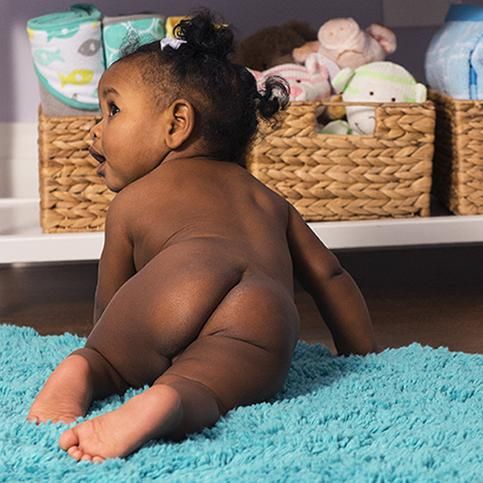Table of Content
Introduction.
What’s Diaper Rash?
Causes of Diaper Rash.
Types of Diaper Rash.
Treatment for Diaper Rash.
Recommended Home Remedies for Diaper Rash.
Conclusion.
Is your baby's bottom looking a little grumpy lately? It may be a diaper rash. And — take a deep breath — you did nothing wrong. Most babies experience diaper rash which often appears out of nowhere, making you and your child uncomfortable.
What’s Diaper Rash?
For infants and toddlers, diaper rash is a frequent skin problem. They can create red splotches and scales in the genital region as well as on the bottom of the infant. Rashes may spread up the child's legs and tummy in some circumstances. Diaper rashes are frequent in warm, damp environments. A diaper is an ideal environment for a rash to form due to the moisture in the diaper area.
Causes of Diaper Rash
A variety of factors can cause diaper rash, such as:
- Tight-fitting diapers or clothes that rub against the skin
- Prolonged exposure to pee or faeces
- Skin sensitivity: Diaper rash may be more common in babies with skin problems such as atopic dermatitis or seborrheic dermatitis (eczema).
- Taking of Antibiotics: Antibiotics are effective against both healthy and dangerous microorganisms. It can decrease bacteria that keep yeast growth in check, leading to yeast infection and diaper rash.
- When new foods are being introduced: The substance of a baby's stool changes when they begin to eat solid meals. Diaper rash is more likely as a result of this. Changes in your baby's nutrition may cause more frequent faeces, which might cause diaper rash. If your baby is breastfed, he or she can have a diaper rash as a result of anything the mother ate.
Types of Diaper Rash
Irritant dermatitis:
The most common type of rash seen everyday is one caused by irritants like pee or faeces. The rash often appears reddish and shiny. When touched, the area may feel heated. This rash affects the genitals, buttocks, thighs, and stomach, but not the folds or creases of the skin between these areas.
Candida dermatitis:
Candida rashes, often known as yeast rashes, are deep red in colour. Inside the diaper area, in the folds and creases of the thighs, and even outside the diaper area, they appear as patches or plaques. Itching and a white or yellow discharge from the vaginal area are also common in baby girls. Scaling or redness of the penis in baby boys is possible.
If you suspect yeast, inspect your child's mouth as well. They could be suffering from thrush, a yeast infection in the mouth. When a baby is taking antibiotics for an infection, this form of rash can develop. After taking drugs, breastfeeding mothers may pass on yeast infections to their children.
Allergic dermatitis:
Your baby could be allergic to something in their diaper or wipes, which is uncommon. They may develop a severe rash as a result of repeated exposure.
Can't think of anything new you added to your routine? Keep in mind that allergic reactions might take anywhere from one to three weeks to manifest following the initial contact.
Diaper rashes produced by an allergic reaction are red, and glossy, and can appear on vast parts of the body, including the genitals, buttocks, abdomen, and thighs. Basically, you'll see it anywhere diapers and wipes come into contact with other items or where other products are applied.
Treatment of Diaper Rash
- Most irritation-related rashes can be treated with over-the-counter (OTC) lotions and ointments. You could go for zinc oxide creams or thick petrolatum-based ointments to keep your baby’s skin protected as it recovers.
- Use of baby powder: Keep it out of your child's face. The powder contains talc or cornstarch, which might cause respiratory issues. Apply it to the diaper area after putting it in your hand.
- Before and after each diaper change, wash your hands.
- Check your baby's diaper frequently and replace it as soon as it becomes soiled or damp.
- Simply use ordinary water. Use a gentle cleaner to remove excrement from your baby's skin.
- Rather than rubbing, gently pat the area clean and dry.
- If you must use wipes, make sure they are gentle. Avoid those that contain perfumes or alcohol. Alternatively, a clean, soft washcloth can be used.
- Before putting on a new diaper, make sure the area is fully clean and dry.
Recommended Home Remedies for Diaper Rash.
Here are some home remedies for diaper rash that you can try:
- Use of coconut oil: Coconut oil is one of the most popular home remedies for diaper rash in babies because of its antifungal and antibacterial qualities.
- Drawing an Oatmeal bath for your baby: Oatmeal has been shown to help babies with diaper rash. It alleviates the discomfort.
- Application of breast milk: Diaper rash can supposedly be treated with breast milk. Simply apply a few drops of breast milk to the affected region of the rash and let it dry. After you've tried this cure, put on fresh diapers for optimal results.
- Use of Aloe Vera: Aloe Vera gel can be used if your baby's diaper rashes are associated with severe inflammation.
- Keep your baby's diapers clean: Try changing your baby's diapers frequently and try to avoid alcohol-based wipes.
- Diaper's free time: Lack of air circulation around the bottom area is one of the main causes of diaper rash in babies. As a result, some diaper-free time is essential. Allow your baby to go between diaper changes without wearing a diaper. The rash will heal considerably faster if the region is ventilated.
Conclusion
Diaper rash is quite common in infants and is not a sign of negligence on the part of the parents. Diaper rashes are quite prevalent and can affect any child who uses a diaper.
Cloth or disposable materials are used to make diapers. Cloth diapers can be washed and reused after becoming dirty. After each use, disposable diapers are discarded.
According to research, disposable diapers are less likely to cause diaper rash. What matters more than the type of diaper is how frequently it is changed. Change diapers as needed, whether you use cloth diapers, disposables, or both, to keep your kid clean, dry, and healthy.










Comments